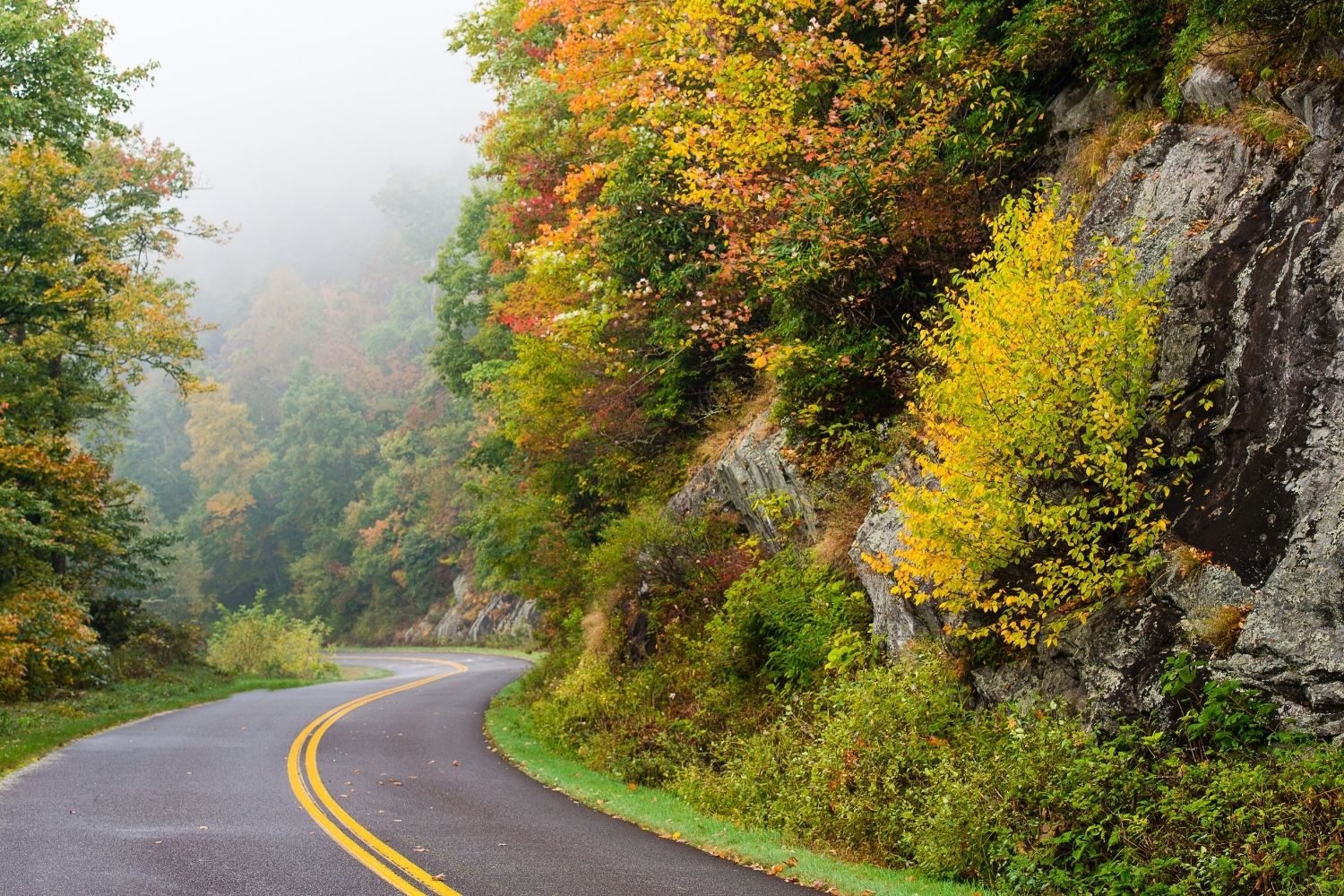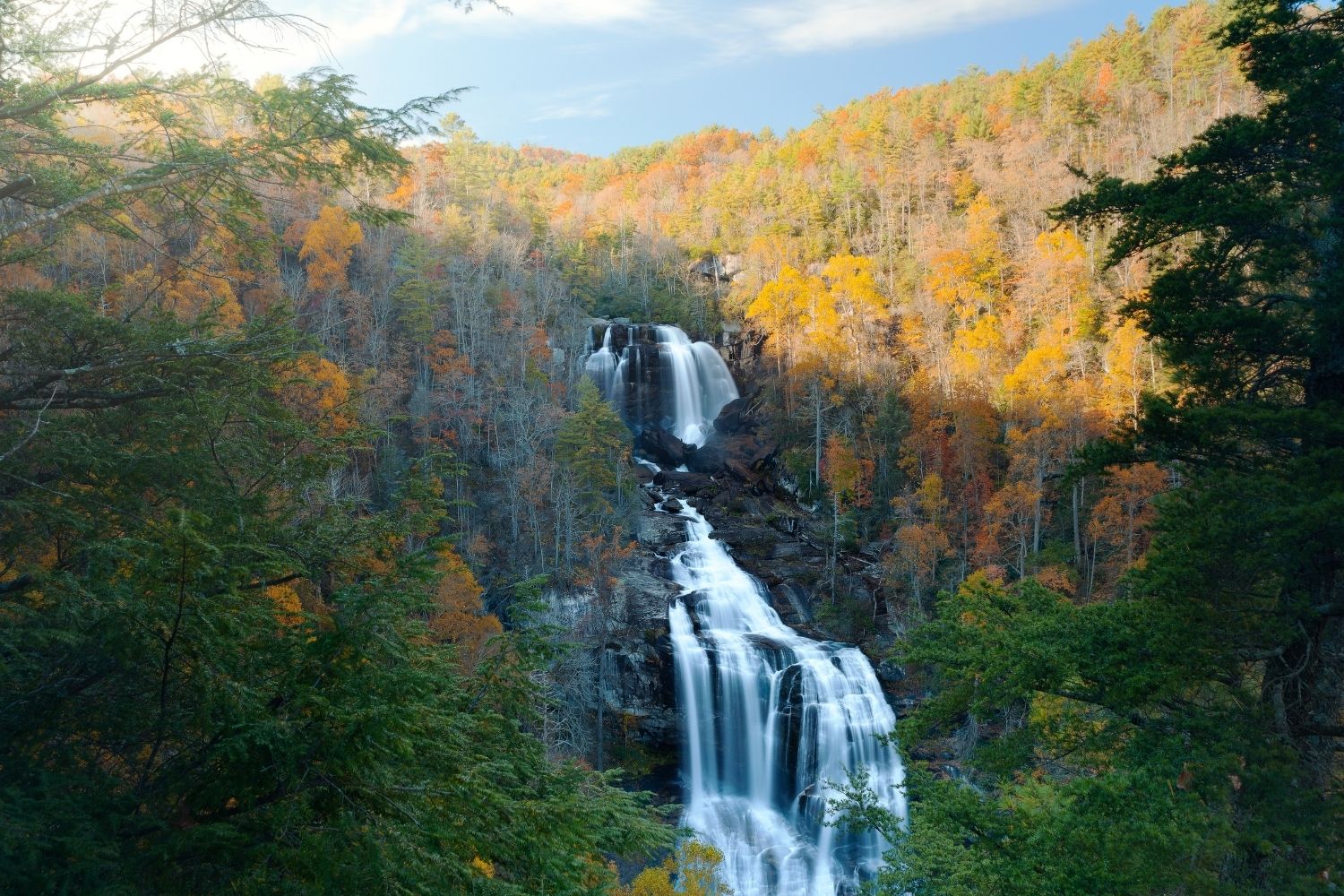Planning to visit Pisgah National Forest and want to know what to expect? We break down everything you need to know before your visit! Pisgah National Forest spans over 500,000 acres in the mountainous region of western North Carolina.
A pioneer of protected landscape, it’s the home of the first-ever school of forestry in the country, the first designated wilderness area in the southeast, and was the actual first tract purchased under an act passed in 1911 that led to the creation of more public outdoor spaces along the East Coast.
The terrain is dominated by hardwood forest, towering peaks, and whitewater rivers. The expansive wilderness is divided into three different districts named Grandfather, Appalachian, and Pisgah. There are hundreds of trails to explore these scenic surroundings and bask in the abundance of natural beauty. It comes as no surprise that Pisgah offers some of the best outdoor recreation opportunities in North America.
Where is Pisgah National Forest
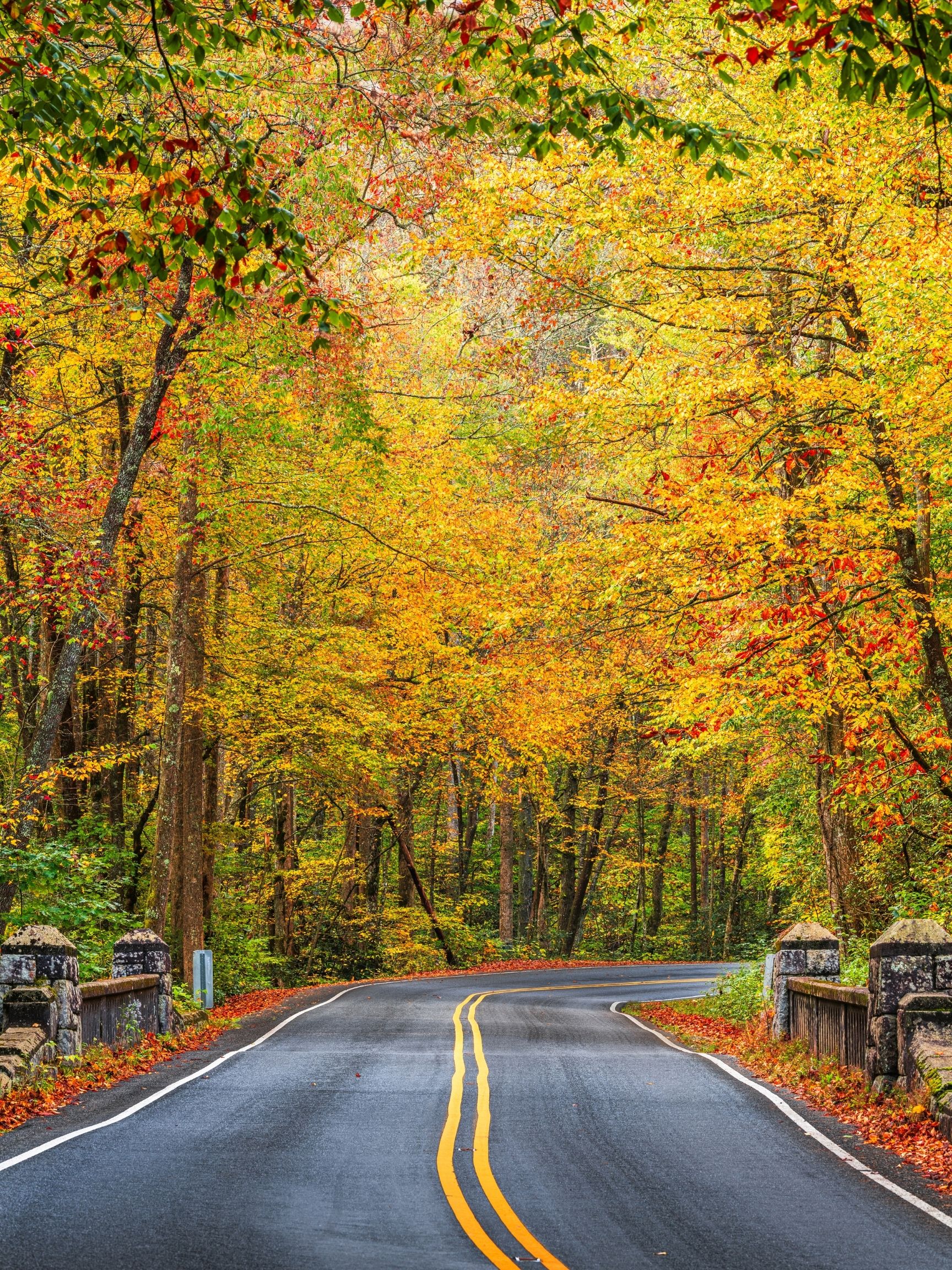
The main entrance to Pisgah National Forest can be found just ten minutes from the bustling cultural hub of Asheville. It’s set entirely within the state of North Carolina and contains the southern Appalachian Mountains, including sections of the Blue Ridge Mountain and Great Balsam Mountain ranges.
Some summits even have elevations of over 6,000 feet above sea level. The quaint North Carolina mountain towns of Brevard and Waynesville also offer easy access to the forest. The scenic French Broad River Valley is also part of these vast wilds.
There are 12 counties in total taking up the acreage, and all the landscape is used for hiking, biking, camping, hunting, fishing, paddling, climbing, timber, and wildlife management.
Pisgah National Forest Hours and Admission
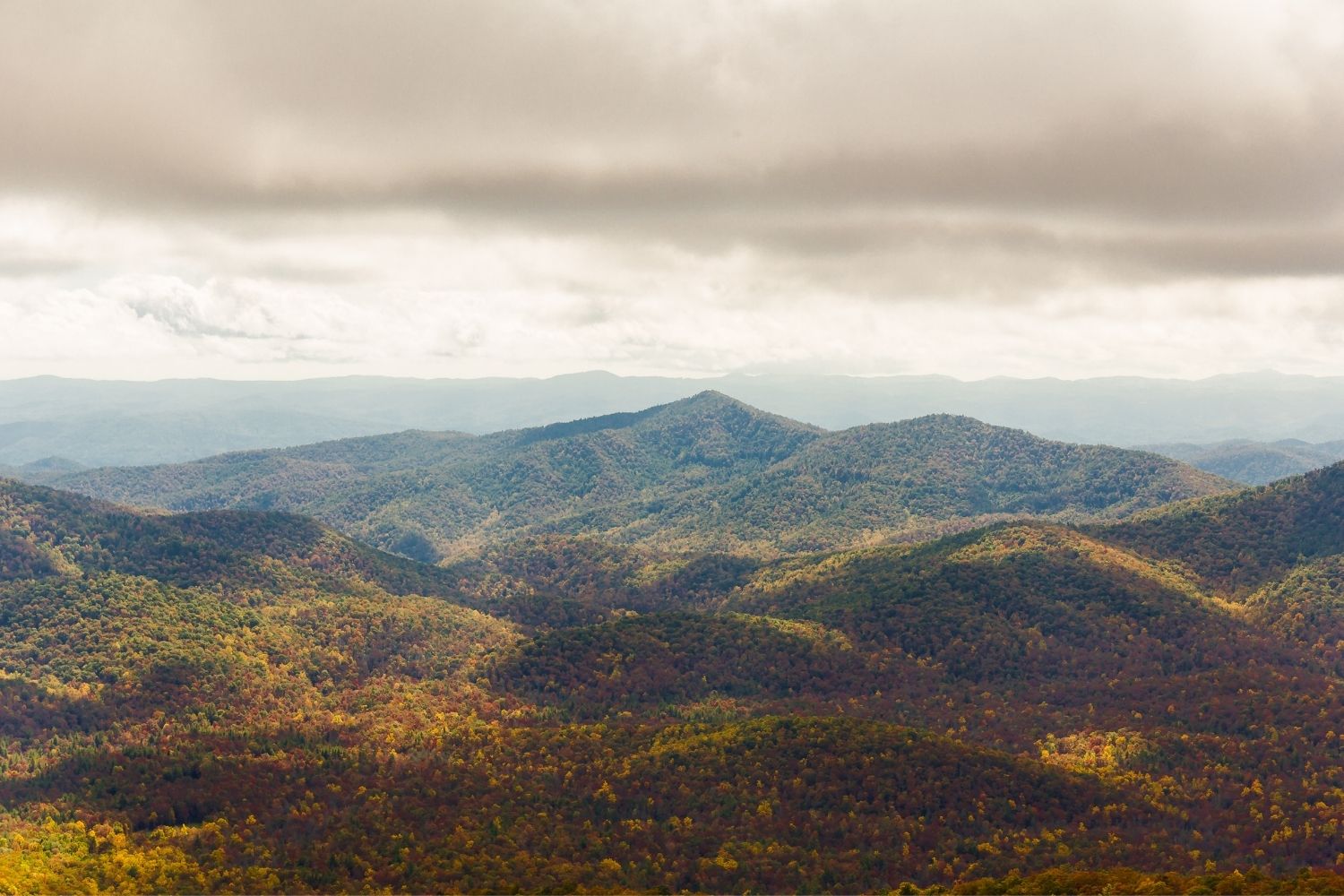
Pisgah National Forest is open 24 hours a day, seven days a week. However, individual attractions or recreation areas within the park may operate under their own schedules. There is no entrance fee to the national forest or any of the state parks that can be found inside.
Some of the educational and cultural sites do require admissions, such as the North Carolina Arboretum or the Cradle of Forestry.
Almost all of the major highways can access Pisgah National Forest. The main routes used are either the Blue Ridge Parkway or the Forest Heritage Scenic Byway, also known as US 267.
Parking Info for Pisgah National Forest
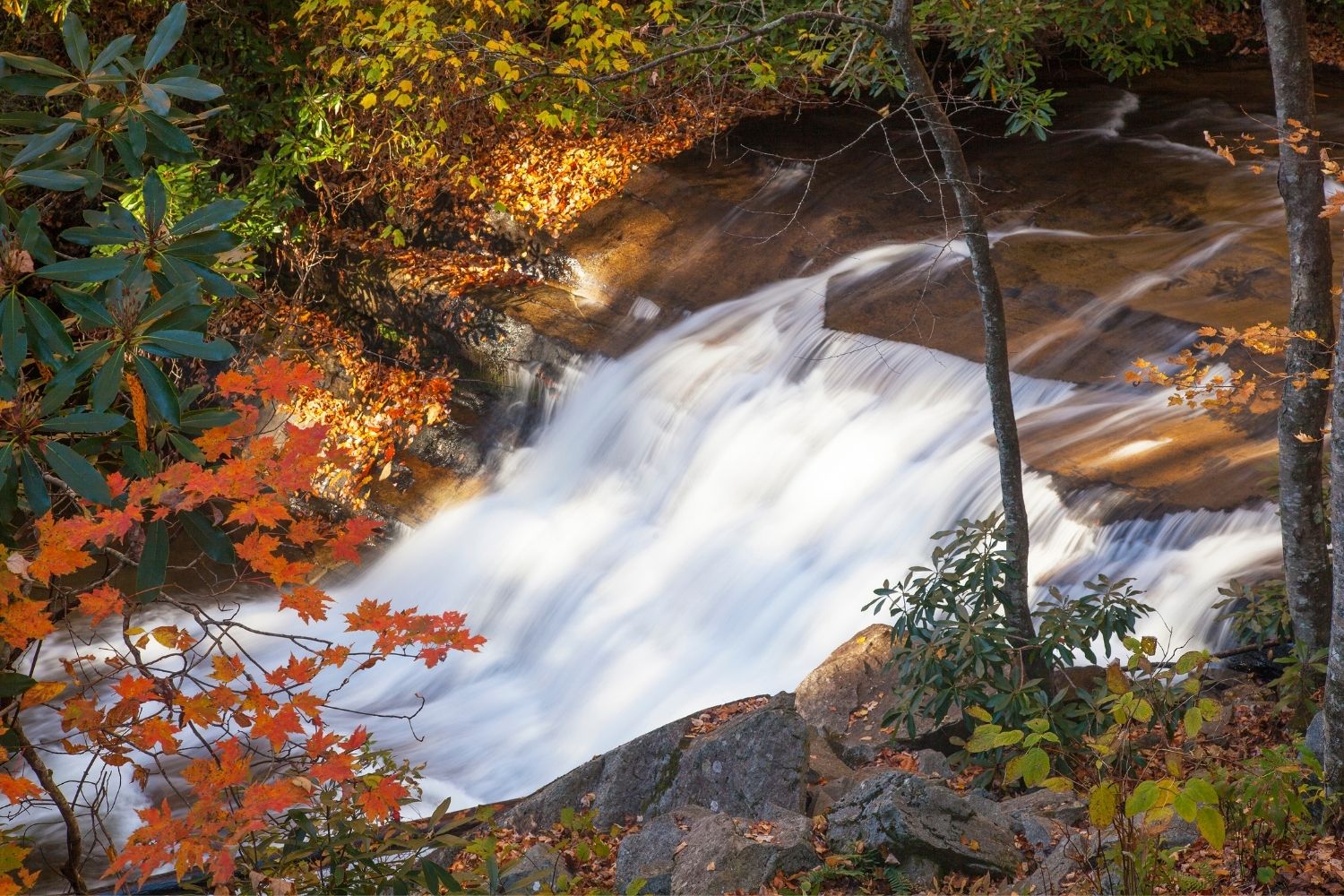
The areas and activities you have chosen will determine where you will park. The visitors’ center is located at 1001 Pisgah Highway for anything in the Pisgah Ranger District. Head to the official office for the Appalachian Ranger District at 632 Manor Road in Mars Hill.
For the Grandfather Ranger District, look for 109 Lawing Drive in Nebo, North Carolina. These central offices are often excellent jumping off points for any adventures within the forest and will provide plenty of helpful information about the surroundings as well.
Otherwise, specific trailheads will provide their own lots to park in. The wilderness areas can get extremely busy, especially on the weekends, so be sure not to park on the shoulder of the roads as this can be dangerous and will often lead to a ticket. The best ways to avoid this scenario is to arrive early in the morning and to already have a few backup options planned nearby.
Where to Eat Near Pisgah National Forest

There are a plethora of eateries to pick from near Pisgah National Forest. Simply pop over to the nearest town and chow down. Asheville is a popular place to go in the area for the most diverse array of delicious dining destinations. Some of the best restaurants in Asheville are Vivian, Tupelo Honey, Curate, or Jargon for a real feel of the quintessential culinary scene here.
Marco Trattoria serves up authentic Italian fares right in the heart of Brevard, a small town in North Carolina near Pisgah. It’s a lovely little neighborhood joint with hearty plates of artisan pizza right out of the wood-fired oven.
For the perfect pub grub, try the local watering hole Riverside Bar, right near the main entrance. They have an impressive selection of cold craft beers to kick back with and a wide assortment of fresh comfort foods to go with them. Pisgah Fish Camp is a solid choice for fresh seafood in the area. They’ve been satisfying hungry hikers for over 50 years, cooking up all the classic down-home country fares served with that beloved side of Southern hospitality.
Pisgah Inn Restaurant is the only option actually set along the Blue Ridge Parkway, and the vistas from the restaurant are spectacular with panoramas from 5,000 feet high. Go for any meal of the day and delight in an eclectic menu of everything from pastas to sandwiches.
Facilities to Use at Pisgah National Forest
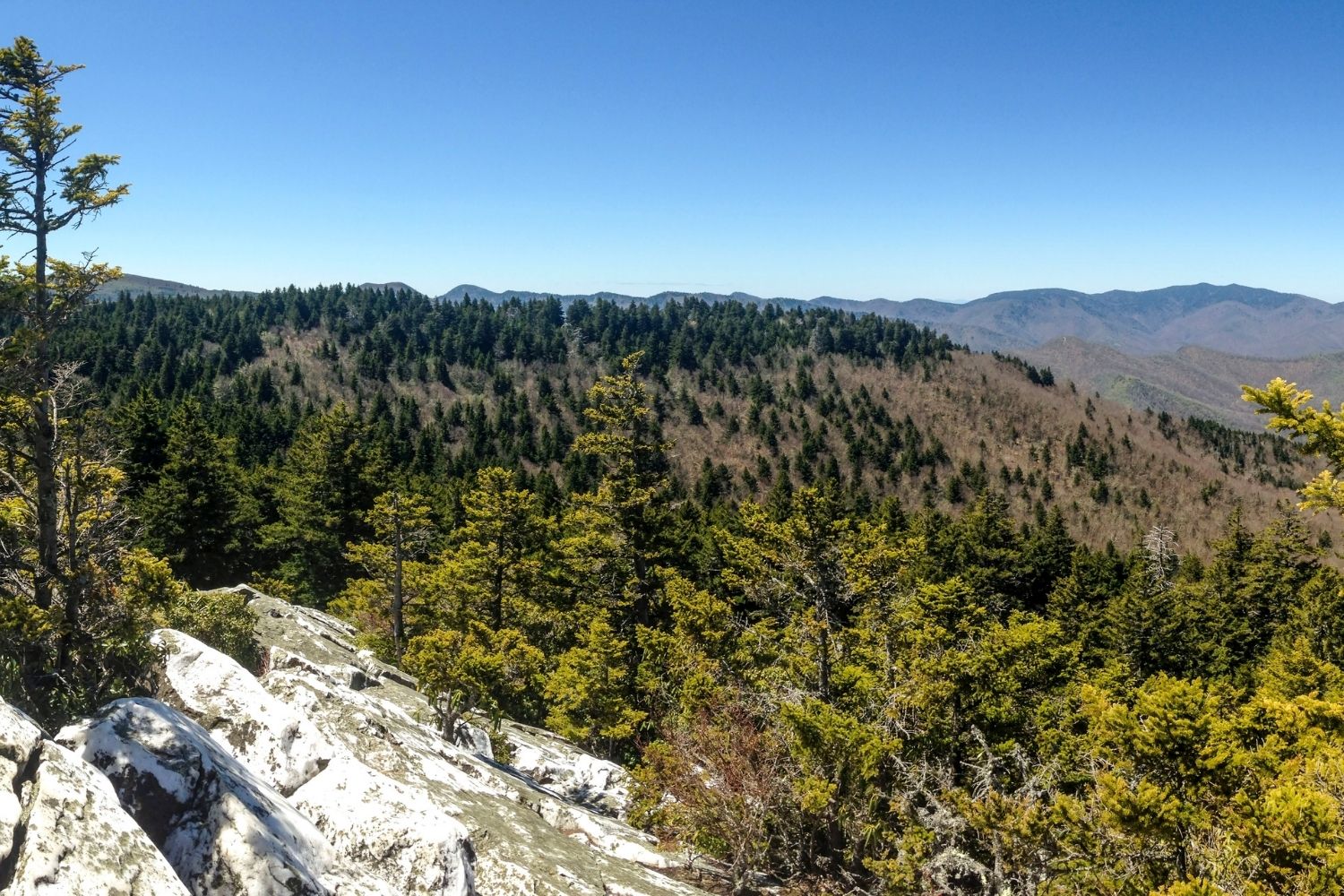
Camping is a popular pastime in the remote and rugged terrain of Pisgah, and a few of the best campsites in North Carolina lie within the park. It’s a great way to see sites for dispersed camping, group camping, cabin rentals, and RV camping scattered throughout.
Some common sites include Davidson River, Lake Powhatan, Carolina Hemlocks, Mortimer, and North Mills River. These spaces offer the most amenities with perks like showers, bathrooms, drinking water, plenty of spots, and easy access to trailheads. Some take reservations and others are first come, first serve.
Day-use areas throughout the park provide the perfect places for a packed picnic or a relaxing respite among the lush landscape. Murray Branch, Cold Spring, and Coon Tree are particularly beautiful and convenient choices for this. These are also amazing spots for fishing, swimming, and paddling as well as picnic tables and restrooms to use.
Often, they provide some much-needed shade from the Carolina sunshine and grills or fire rings to use as well. Be sure to check the seasonal schedules depending on the area you’re adventuring in to see if the facilities available are open year-round or only in the warmer months.
Destination Hikes in the Area
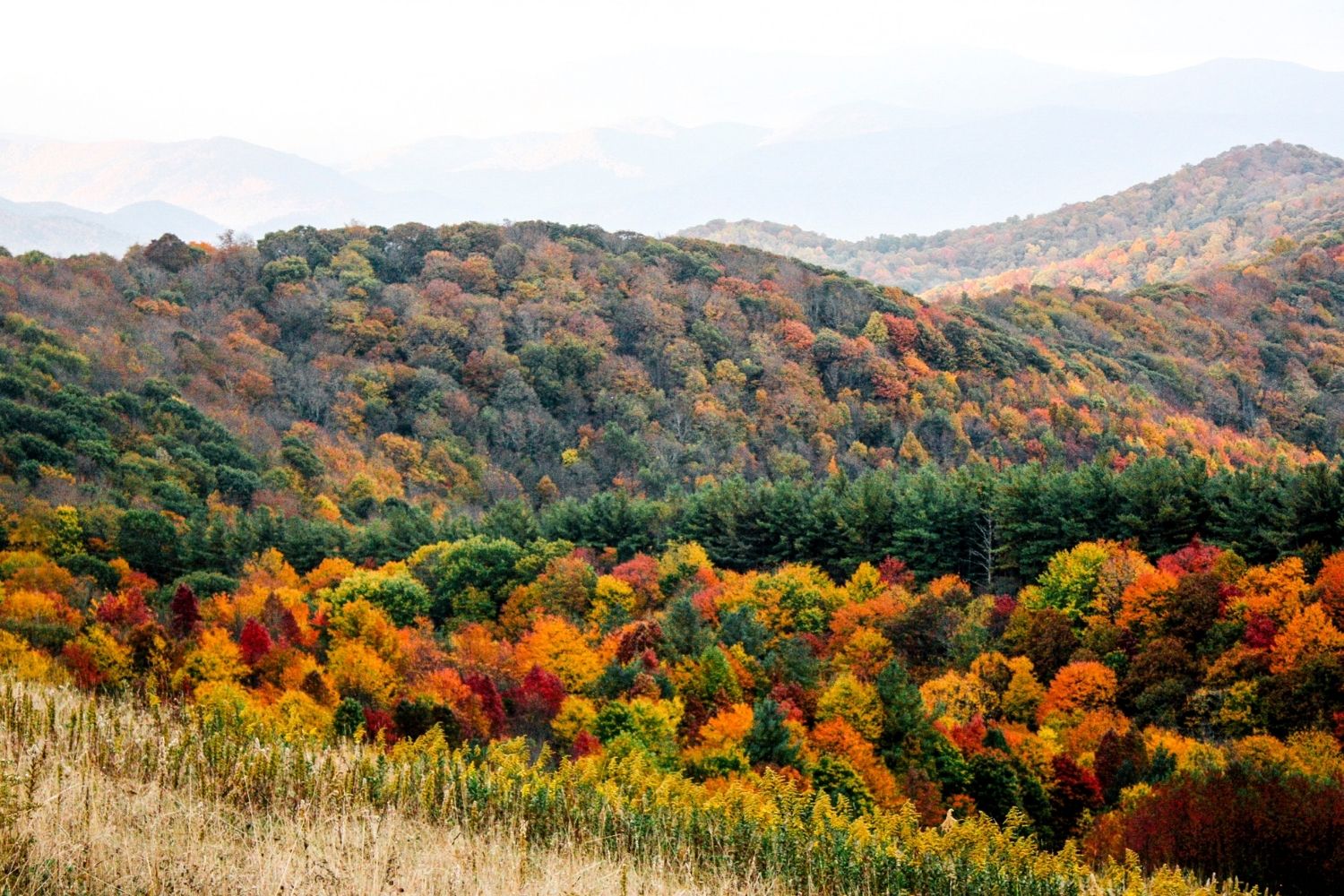
There are over 300 treks to try within Pisgah National Forest ranging from easy to strenuous. Whether you wander to cascading waterfalls, delve into deep gorges, or meander over sweeping mountain tops, you’re sure to discover jaw-dropping natural sites.
Max Patch
Max Patch is actually part of the iconic Appalachian Trail that spans all across the eastern coast of the country. It’s a moderate 1.5 mile round trip trek and is famous for its bald grassy summit and gorgeous fields of wildflowers covering the landscape. 360-degree panoramas allow you to gaze out over mountain ranges stretching into other states for as far as the eye can see. It’s an idyllic hike that’s especially spectacular for sunrise or sunset.
Mount Pisgah Trail
Climb to the top of the iconic cliff that gives this park its special name. It can be easily spotted in the area, towering high above skylines and other summits. Mount Pisgah Trail is one of the more difficult hikes around and is about a 2.5-mile round trip. The second half is especially steep, so be prepared to scramble. However, many believe it’s well worth the effort. The views are unparalleled, and the dense verdant journey to get there is stunning as well.
Mount Mitchell Trail
Mount Mitchell Trail is both long and strenuous hike near Asheville, gaining 3,600 feet in elevation in just 5.5 miles. Mixed hardwood forest gives way to old-growth spruce and turns to Frasier fir before culminating in breathtaking vistas from the peak. It’s the tallest mountain east of the Mississippi and is part of the Black Mountain range formed over a billion years ago. This hike is also part of the legendary Mountains to Sea Trail.
Hawksbill Mountain
Hawksbill Mountain is a 2.2 mile out-and-back moderate hike in Pisgah National Forest. This coveted craggy peak rises from the depths of the lovely Linville Gorge. This makes for a short but steep trek packed with picturesque vistas, hardwood forests, and rhododendron and laurel-filled landscape. It gains about 700 feet in elevation overall, but the panorama of the uninterrupted terrain surrounding the majestic peak is easily one of the best.
Glen Burney Trail
Glen Burney Trail is set super close to Blowing Rock and is one of the more moderate adventures to try in Pisgah. It’s full of exciting features to find along the way as it’s an ancient native trail full of folklore. It’s just over three miles for the round trip and is mostly flat and downhill. There are several small waterfalls to enjoy, some ruins of historical structures, and absolutely gorgeous gardens. It’s simple to navigate and easy to access.
Craggy Pinnacle
Craggy Pinnacle is a fairly short and moderate hike. It’s just off the Blue Ridge Parkway and offers captivating 360 vistas of the North Carolina surroundings. It’s part of the Craggy Gardens which has several trails to choose from, all beautiful in every season. It’s only a 1.4-mile round trip and boasts many perfect photo-ops such as the charming tunnels, gnarled birch trees, fields of wildflowers, and sweeping views.
Art Loeb Trail
In its entirety, the Art Loeb Trail is over 30 miles long and one of the best hikes in North Carolina. It begins near Davidson River and ends at Camp Daniel Boone. It’s certainly one of the most talked about treks, and choosing any hike that follows along this picturesque path is sure to be an awe-inspiring adventure in Pisgah.
This includes Black Balsam Knob, Sam’s Knob, Flat Laurel Creek, and Cold Mountain. Take an extended backpacking journey over three to four days, or simply take a shorter section of the trail and use some connectors to make a loop. It traverses peaks, valleys, rivers, and waterfalls and offers no shortage of spectacular scenery.
Things to Do In Pisgah National Forest
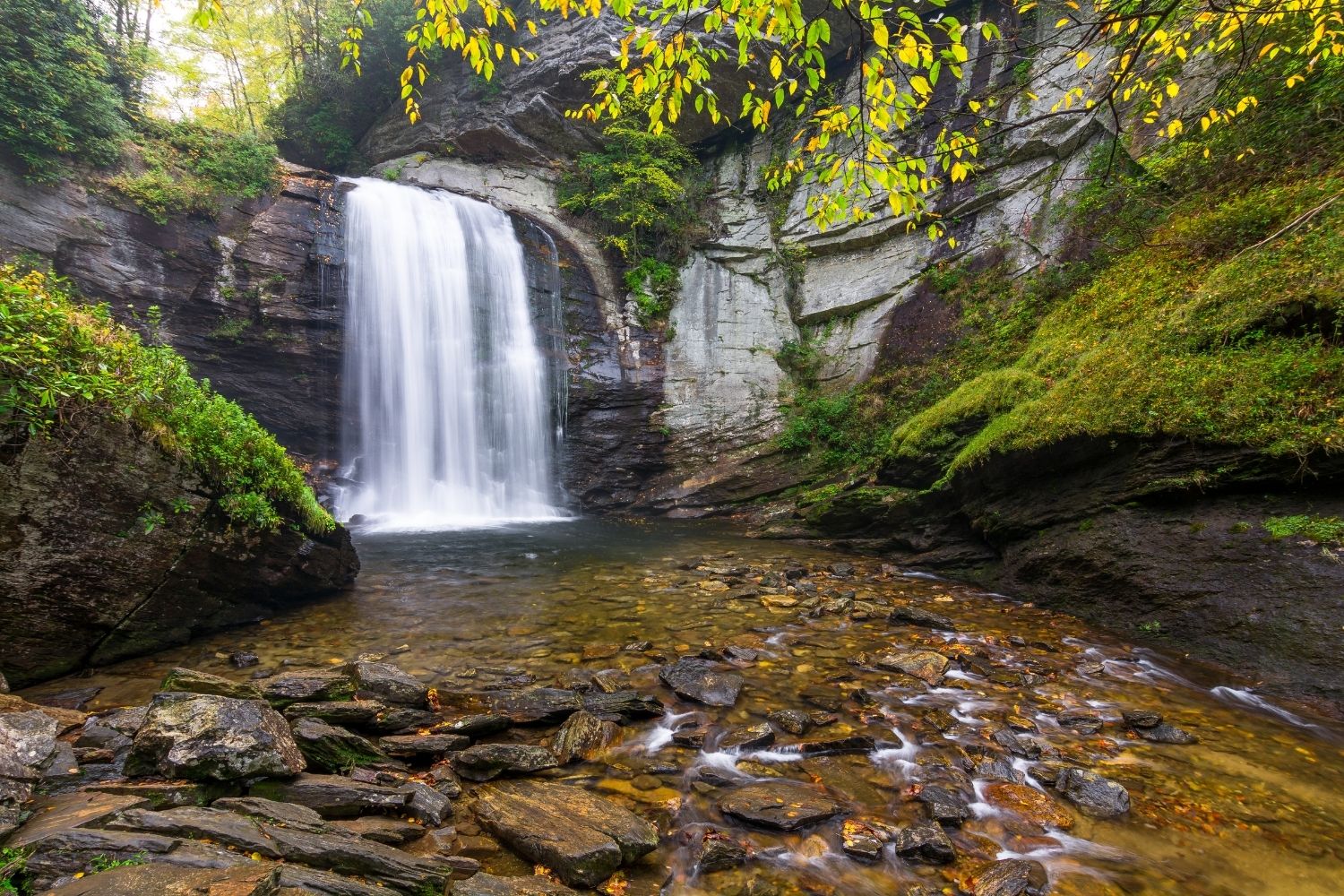
Waterfalls in Pisgah
Pisgah National Forest is covered with an abundance of natural wonders, particularly waterfalls. Catawba Falls are 100 feet tall and nestled in dense forest near Old Fort. It’s an idyllic 1.5-mile walk each way and offers viewing opportunities of both the upper and lower falls.
Linville Falls is one of the most photographed sites in the park, located along the Blue Ridge Parkway and one of the best waterfalls in North Carolina. There are five viewpoints accessible by two different trails, one strenuous and one easy. The breathtaking drop is 90-feet high, rushing into the Linville Gorge.
Looking Glass Falls is easily accessible right from the roadside, making it a must-stop and see. The water flows 60 feet over jagged cliff sides creating an impressive feat that’s perfect for a refreshing swim. Rainbow Falls are tucked away among the Blue Ridge Mountains. Named for the enchanting colorful illusion that appears in its powerful mist, formed from a spectacular series of cascades. You can even experience these falls from every angle along this three-mile round trip trek.
Sliding Rock Falls is a distinctive natural wonder located within Pisgah National Forest and not far from Asheville This 60-foot flat, gently sloping mountain waterfall might not typically draw a large crowd, but it boasts a unique feature. Despite its location, it garners significant attention, attracting visitors from far and wide who eagerly anticipate the thrill of slipping and sliding down this remarkable formation.
Rock Climbing in Pisgah
Rock climbing is a sought-after activity in these parts, and Pisgah boasts three designated areas that are ideal for it. You’ll find routes for every skill level from easy to expert. Table Rock is the place to try as maybe the most impressive fixture within the expansive Linville Gorge. Named for its flat summit, this rock cliff rises high above the horizon at over 3,500 feet. Its vertical walls are easily accessible all year round.
Some of the most popular climbing routes are Peek-a-boo, Cracker Jack, Second Stanza, Devil’s Cellar Chimney, and Jim Dandy. Peregrine Falcons are known to nest in this area, so be sure to check the rules and restrictions before climbing.
Mountain Biking in Pisgah
Mountain Biking is a favorite activity in Pisgah for cycle fanatics and general outdoor enthusiasts. Bent Creek often attracts hundreds of riders ready to explore the expansive system of trails each day. There are over 30 miles of diverse terrains to traverse here, right on the edge of Pisgah National Forest.
Bennett Gap is one of the fastest and roughest trails available and can even be combined with Avery Creek and Black Mountain. It’s really best for advanced bikers. The single-track path of Laurel Creek/Pilot Cove can be a challenge, but the rewarding views along the way are well worth it. For a faster excursion try Squirrel Gap which is only a few miles long.
Horseback Riding in the National Forest
Visit Pisgah stables for a guided adventure out in the wild on horseback. There are also a couple of stables, called Wolf Ford and Wash Creek, where you can bring your own horse and ride out on the designated paths, mainly set in the South and North Mills River area. Regardless, it’s a unique and magical way to meander through the pristine oasis of Pisgah.
When is the Best Time to Visit Pisgah National Forest?
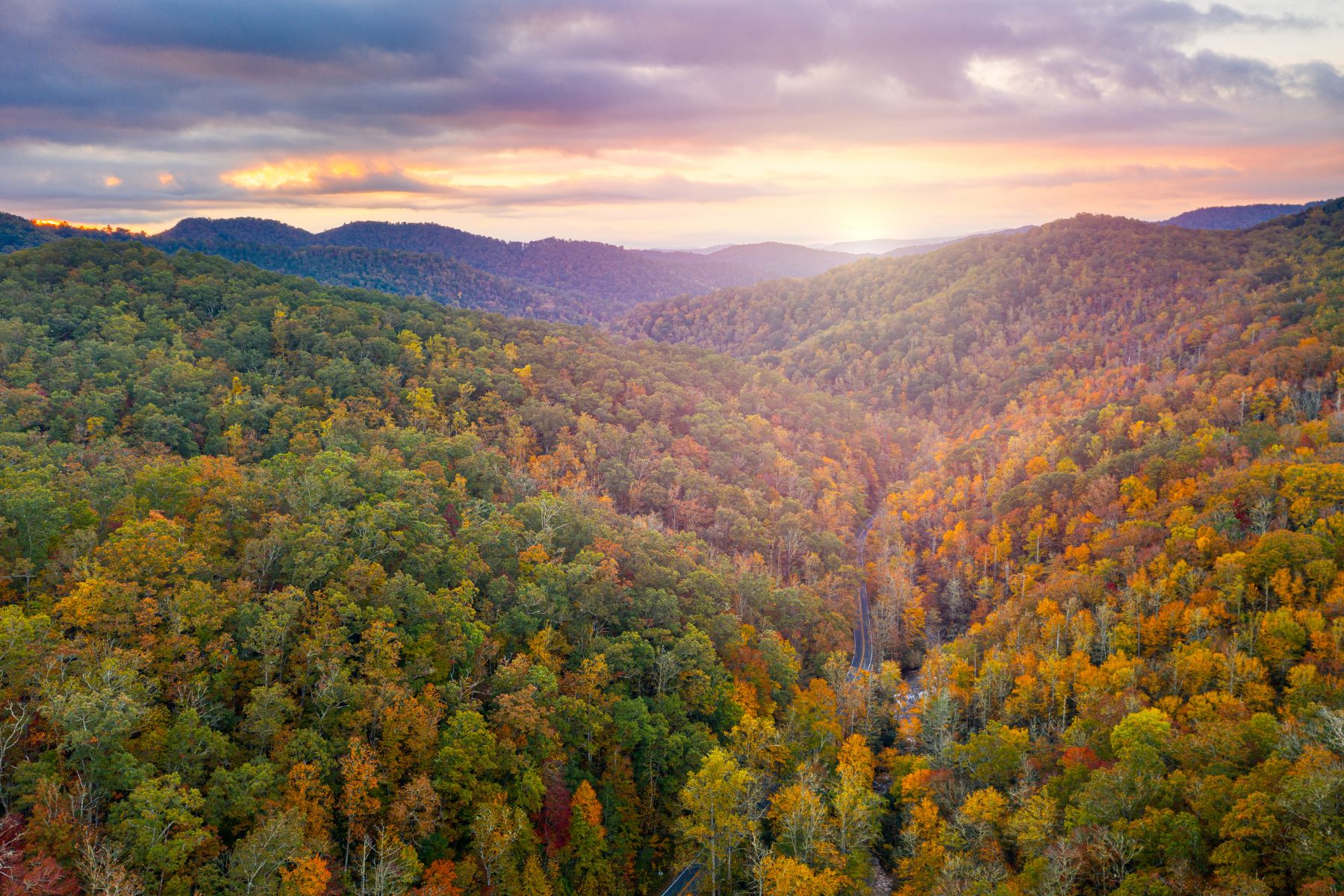
Pisgah National Forest is open year round, but in our opinion, the best time to visit is during Fall in North Carolina. Fall is a favorite time for many visitors due to the stunning foliage as the leaves change color. The weather remains pleasant, and the crowds start to thin out compared to summer. If you’re into photography it’s an excellent time for hiking and shooting photos of the stunning foliage.
That being said, Pisgah National Forest offers something for everyone during every season. The the spring you’ll find wildflowers abound, while the summer is ideal for camping and taking a dip around the waterfalls, and winter is the season is good for solitude, wildlife viewing, and some lower-elevation hiking.
EXPLORE THE AREA

